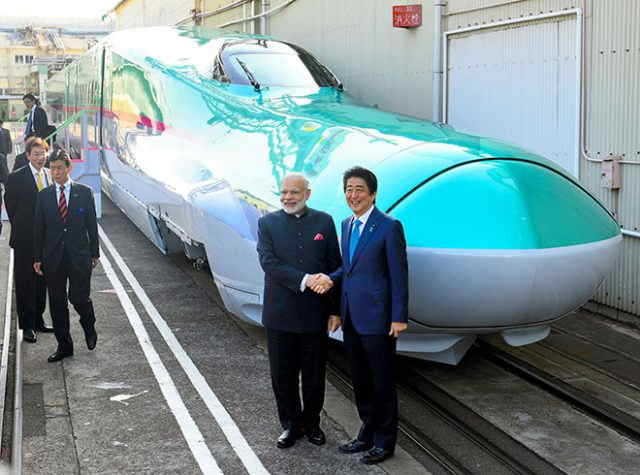In one of the largest contracts ever in India, National High Speed Rail Corporation Limited (NHSRCL) had last month signed a contract with Larsen and Toubro (L&T) for the construction of 237 km of viaduct and other installations for the Mumbai-Ahmedabad bullet train project. At Rs 24,985 crore, this is the country’s biggest infrastructure contract for design.
The company will finish the job in four years, L&T’s CEO and managing director S N Subrahmanyan had said at the contract-signing ceremony in presence of Japanese Ambassador to India Satoshi Suzuki, Chairman Railway Board VK Yadav.
The company has also bagged the second contract for 88 km, making a combined 325 km of construction and design to be done by the Indian construction major. India and Japan had earlier agreed that civil construction work for the bullet train would be done by Indian firms. The 508-km bullet train project will connect Mumbai with Ahmedabad with trains running at 320 km per hour.
E5 series Shinkansen bullet trains are part of a new generation Japanese high speed train (also called Hayabusa) which was put into commercial operation in March 2011. The train is operated by East Japan Railway Company (JR East). Though the train could run up to speeds of 400 kmph during test runs, its top speed was fixed to 320 kmph for passenger and environmental comfort, from 2012.
The new generation E5 series trains are designed to be more comfortable and faster than ever before. It is designed to be a business and luxury car service. It comes with a premium first class seating area. Japan’s famous bullet train Shinkansen has been impressive since its debut in 1964. Throughout its operational life, it has not recorded any major accidents and stands as a symbol of safety.




















